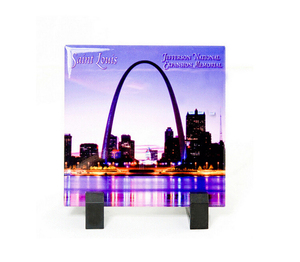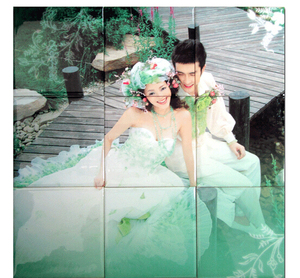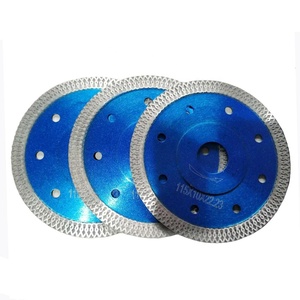(166444 products available)


































































































































































































































Kale seramik is a Turkish term that refers to ceramic tiles. Ceramic tiles are made from clay and other natural products, such as sand and quartz. They are generally fired in a kiln at high temperatures to achieve hardness and durability. These tiles come in different types, each with unique features and benefits. Below are some of the most commonly known types of ceramic tiles:
Glazed Tiles
These tiles have a glass-like coating baked on the surface. This coating protects the tile from stains and increases its color. There are two types of glazed tiles: high gloss and matte.
Unglazed Tiles
These tiles do not have a glass-like coating on their surface. They usually have a more natural look and feel. They are often used in areas where there is a lot of traffic because they are more durable than glazed tiles.
Terracotta Tiles
Terracotta tiles are made from red clay. They have a distinct earthy color and are unglazed. These tiles have a rustic look and feel and are usually used in outdoor spaces or areas where people want to create a warm and natural atmosphere.
Stoneware Tiles
Stoneware tiles are made from a mixture of clay and feldspar. They are fired at a very high temperature, making them dense and hard. These tiles are usually waterproof and can be used in both indoor and outdoor spaces.
Insulated Tiles
Insulated tiles are designed to provide insulation against heat and cold. They are usually thicker than regular tiles and have a special insulating layer at the bottom. These tiles are ideal for use in areas where people want to keep their homes warm during winter and cool during summer.
Handmade Tiles
As their name suggests, handmade tiles are made by hand. They come in different shapes, sizes, and designs. These tiles usually have a unique and artisanal look and feel. They are often used in areas where people want to add a personal touch to their space.
Digital Print Tiles
These are modern tiles that use digital printing technology to create designs on their surface. They can imitate natural materials like wood and stone and come in various colors and patterns.
3D Tiles
3D tiles are ceramic tiles with three-dimensional designs. They have textured patterns that create depth and visual interest on walls and floors. They are often used as accent walls or in decorative installations to add a dramatic effect.
Multifunctional design:
Kale Seramik provides designs with multiple functions. These designs serve various uses, making them practical and efficient. For example, a tile might be used for flooring and wall covering, allowing for versatile application in a space. This design approach simplifies the selection process for consumers and ensures that the tiles can be used in different areas of a home or building.
Natural design:
Kale Seramik's natural designs are inspired by nature. These designs aim to create a natural and organic feel within indoor spaces. For instance, tiles with a natural stone appearance can bring the beauty of nature indoors. Similarly, wood-inspired tiles can replicate the warm and inviting look of wooden flooring, providing a practical and easier-to-clean alternative.
Classic design:
Kale Seramik offers classic designs that never go out of style. These designs feature timeless patterns and motifs that can withstand the test of time. For instance, traditional geometric patterns or classic ornamental motifs can add a touch of elegance and sophistication to any space. With classic designs, users can rest assured that their spaces will always look stylish and fashionable.
Modern design:
For those who prefer a more contemporary look, Kale Seramik provides modern designs. These designs are characterized by clean lines, minimalistic patterns, and a sleek appearance. Tiles with abstract prints or monochromatic color schemes can perfectly fit modern interiors, giving them a fresh and updated look. Modern designs reflect the current trends in home decor and are ideal for individuals who want to stay ahead of fashion.
Decorative Ceramic Tiles
Decorative ceramic tiles are pretty versatile. They can be used on floors, walls, tabletops, decorative panels, and fireplaces.
Decorative Ceramic Products
Decorative ceramics are often used in home decor, including vases, decorative plates, sculptures, and wall hangings. They add a personal touch to living spaces and can be found in various styles to complement any interior design.
Functional Ceramic Products
Functional ceramics are used in everyday life. They serve practical purposes while often being beautifully designed. People use them in homes, restaurants, and cafes. They are popular in homes, restaurants, cafes, and events. Their artistic appeal makes dining and entertaining more enjoyable.
Artistic Expression
Both decorative ceramic tiles and functional ceramics allow artists to express themselves. Artists can create unique pieces that tell a story or convey a style.
Cultural Significance
Both types of ceramics often reflect the culture and traditions of the people who make them. They can tell stories through their designs and techniques. In some cultures, specific ceramic styles are iconic and passed down through generations, preserving cultural identity and heritage.
Outdoor Decor
Decorative ceramic tiles are suitable for outdoor use in gardens, patios, and pools. They can create beautiful outdoor spaces and withstand the weather. They are used to make mosaics, accent walls, and decorative features in outdoor areas.
Imitation Marble Tiles
Imitation marble tiles are used in flooring, wall coverings, and countertops. They are a cost-effective option for people who want the look of marble.
Food Safety
When using functional ceramics, people ensure they are food-safe, especially for plates and utensils. Manufacturers ensure that food-safe glazes are used for ceramic products that come into contact with food.
Artist Collaboration
Some decorative ceramics are created through collaborations between ceramicists and visual artists. This partnership brings paintings, drawings, and other artistic elements onto the ceramic surface.
Personalization
Both types of ceramics can be personalized. People can customize them with names, initials, or special designs for gifts or unique home decor. Personalized ceramics add a meaningful touch to decorative and functional items.
Wholesale ceramic tiles buyers need to consider certain factors to ensure their choice is suitable for their customers. These factors include:
Trends and Customer Preferences
Stay informed about the latest trends in tile design, color, and texture. Understand the preferences of the target customers. For example, if the customers prefer eco-friendly products, choose tiles with sustainable materials.
Quality and Durability
Select ceramic tiles that are made with high-quality materials. Their finish should be resistant to stains, scratches, and fading. Consider tiles with a durable glaze and a robust wear layer for high-traffic areas.
Performance Characteristics
Choose tiles based on their PEI rating and slip resistance. This will ensure that the tiles can withstand the expected foot traffic and are safe for use in wet areas such as bathrooms and kitchens.
Installation and Maintenance
Consider the ease of installation and maintenance of the ceramic tiles. Opt for tiles that have standard sizes and shapes. Also, choose those that require minimal maintenance to reduce installation and upkeep costs for the end-users.
Product Samples
Request product samples from the suppliers. This will allow for a physical evaluation of the tiles' appearance, texture, and quality. Use the samples to assess how well the tiles align with the customers' preferences and the design trends.
Compliance with Standards
Ensure that the ceramic tiles meet relevant industry standards and certifications. This will ensure that the tiles are safe and perform well for the end-users.
Q1: What are the benefits of using a ceramic stovetop for an electric range?
A1: Electric ranges with ceramic cooktops offer even heat distribution, easy-to-clean surfaces, and a sleek aesthetic. They utilize radiant heat, providing efficient cooking ideal for boiling, simmering, and frying.
Q2: What is the difference between a ceramic and glass stovetop?
A2: While both are easy to clean, a glass stovetop may scratch more easily than a ceramic one. Ceramic stovetops also provide better heat resistance and durability.
Q3: Can all types of cookware be used on ceramic stovetops?
A3: Ceramic cooktops require magnetic cookware to work, like those made from stainless steel or cast iron. Non-magnetic materials, including aluminum and copper, won't work on them.
Q4: How should a ceramic stovetop be cleaned?
A4: To clean a ceramic stovetop, wait until it cools down, then use a scraper to remove any burnt food. After that, apply a special cleaner for ceramic tops or a mild detergent with a soft cloth. Finally, wipe off the residue with a clean cloth.
Q5: What are the advantages of using a ceramic tile backsplash?
A5: Ceramic tile backsplashes are easy to clean, resistant to stains and water, and can withstand high temperatures. They also offer various designs and colors, allowing customization of the kitchen space.